Different email marketing solutions often offer superficially similar sets of features, making it easy to think that it doesn't matter which one you choose. In fact, there are important differences between each platform that you should consider before making a final decision.
MailChimp has been one of the top email marketing options for many years, but it has already started to decline in popularity-especially after its recent split with Shopify. Fortunately, there are a number of powerful alternatives available if you're looking for another email marketing tool.
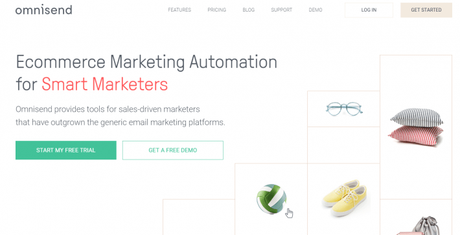
Omnisend is among Mailchimp's top competitors, and many dissatisfied Mailchimp users switch to Omnisend. This article will cover the features available in each solution and help you make an informed decision. (With Omnisend Alternatives)
Detailed Omnisend Vs Mailchimp Comparison 2019: Who Wins?? (With Omnisend Alternatives)
MailChimp and Omnisend's Target Audiences
The most important difference between the two applications is that they're designed to target two different types of businesses. MailChimp is generally intended for smaller companies, with relatively affordable pricing and features that match common small business pain points. This can make it difficult to scale if your company experiences growth.
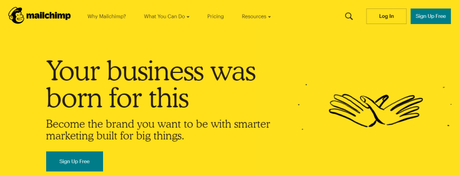
In contrast, primarily targets e-commerce businesses and provides a range of features to facilitate e-commerce practices including things like a product picker and native discounts. E-commerce companies can still use Mailchimp, but Omnisend comes with tools more specifically tailored for that niche.
Core Email Marketing Functionality
While MailChimp and Omnisend both offer a range of more powerful and targeted features, they're both used as email marketing solutions and therefore provide a number of the same features. That said, there are several differences which may be important to certain types of businesses.
Building Emails
Mailchimp comes with one of the most effective email builders available, making building a new campaign as simple as dragging and dropping. It requires no knowledge about HTML and allows you to integrate a wide range of content into your emails.
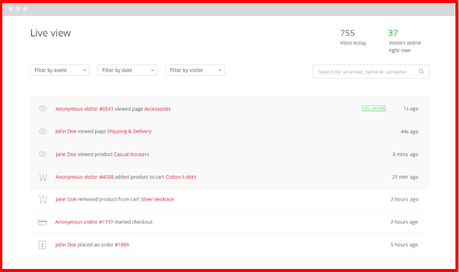
Omnisend uses a similar interface including the drag-and-drop interface made popular by MailChimp, and similar types of content are enabled on each application. Omnisend also offers native e-commerce integration and a number of related tools like smart product recommendations and automatically applied discount codes. You can drag and drop rewards, discounts, and more directly into new emails.
One feature exclusive to Omnisend is the ability to save content blocks and use them again in future campaigns. Mailchimp's lack of integration with Shopify is also a major concern for Shopify vendors.
Omnisend Vs MailChimp: Pricing Comparison
MailChimp and Omnisend each offer three pricing tiers representing relatively comparable plans and feature sets.
Free Mailchimp subscriptions are limited to 2,000 subscribers and 12,000 emails per month, and they cannot remove the Mailchimp footer from their messages. If you use the Free plan, you'll also only have access to email support for the first 30 days you use Mailchimp. Omnisend limits Free users to 15,000 emails a month and no more than 2,000 on a single day.
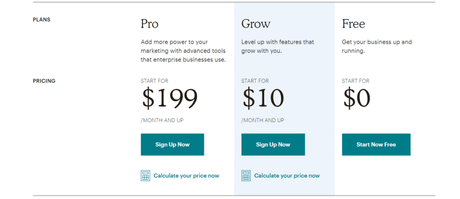
Pricing for premium subscriptions to both solutions is based on your number of subscribers. Mailchimp's Grow plan, for example, costs $10 per month for companies with up to 500 subscribers. The comparable Omnisend Standard subscription costs $16 per month for the same number, but also provides significantly stronger automation features (more on that later).
Omnisend Standard users can select a number of add-ons in order to supplement their subscription with extra features. These include:
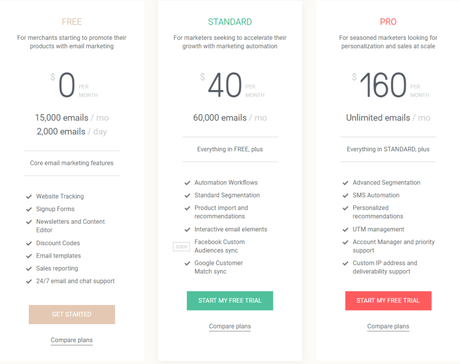
- Custom IP address ($199 per month)
- Facebook Custom Audiences ($199 per month)
- Google Customer Match ($199 per month)
- Customer feedback ($199 per month)
- Facebook Messenger ($149 per month)
- Web push notifications ($149 per month)
That said, each of these add-ons is available in the Pro plan, making it more cost-effective for most businesses.
Mailchimp allows users to add a Pro subscription to their existing plan for an extra $199 per month. Omnisend's corresponding Pro plan also costs $199 per month, although that includes all the features that come with a Standard plan.
Omnisend also offers an Enterprise subscription which goes well beyond the features involved in any other plan from either company. They advertise it as starting at $2000 per month, but there is no set pricing and users are asked to contact their Sales department for more information.
Audience Segmentation
The ability to segment your audience is important to every email marketer, and both Mailchimp and Omnisend provide powerful segmentation features to help you target even the most specific audiences.
Regardless of which solution you use, you'll be able to segment users based on these common factors:
- Store interactions: Users who have browsed your online store or added something to their cart.
- General information: Criteria including language, location, demographics, and more.
- Email engagement: Users who have clicked through on previous email campaigns.
Both of them also allow you to import segments of your audience from other platforms like Facebook and Google. This makes it easy to run remarketing campaigns based on a wide range of data about your audience.
Marketing Automation
Automation is crucial to effective email marketing, and both platforms are designed to make it as easy as possible to automate key aspects of communication and reduce the time you spend on tedious, repetitive tasks.
Mailchimp offers conventional email targeting features in addition to integration with Facebook custom audiences and Google ad subscription list. Its email automation tools, on the other hand, are one of its main disadvantages-especially compared to the features available with Omnisend.
Omnisend offers a variety of automated workflows plus compatibility with WhatsApp, Facebook Messenger, text, Viber, and push notifications. These tools may not be important to all users, but having the flexibility to run all your campaigns in one place can be extremely convenient.
Mailchimp provides enough features for businesses primarily interested in email marketing, but we recommend Omnisend if you're looking for a more flexible solution. Omnisend also comes with a more visual interface that makes it easy to understand the progress of each workflow.
Email Capture
Building successful email campaigns depends on being able to grow your audience, and both Mailchimp and Omnisend provide tools to facilitate sign up including landing pages, signup forms, and popups that are fully customizable on each platform. You can also enter more fields to ask for further information from each user.
Omnisend also offers an interactive form which incentivizes new users to subscribe by allowing them to spin a prize wheel for discounts in exchange for entering their email. This approach is much more effective than conventional sign up forms.
Aside from this important difference, Mailchimp and Omnisend are essentially comparable when it comes to building your list. You'll be able to leverage the same email capture tools with either solution.
List Of Other Best Email Marketing Tools In The Market 2019
Mailchimp and Omnisend are the two most common email marketing applications, but that doesn't mean there aren't other effective options available. If you're interested in exploring alternatives, these are a few of the solutions you should know about.
Like Omnisend, Drip is a versatile platform offering email marketing features and convenient e-commerce integrations with website builders like WooCommerce and WordPress. It also provides a visually intuitive workflow interface and a range of other features that make it one of the top competitors to both Omnisend and Mailchimp.
Drip comes with some of the strongest support features of any current email marketing application, including documents for a wide range of functionalities along with guides, courses, webinars, and live chat support to help you get more out of the program.
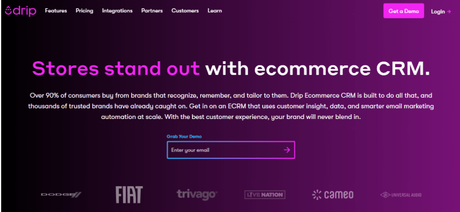
You can expect many of the same tools and features that come with both Omnisend and Mailchimp such as robust email automation and strong audience targeting features. It's designed to maximize audience engagement and help you narrow down your email list as much as possible.
At $49 per month, Drip's Basic plan allows users to send an unlimited number of emails to a maximum of 2,500 active recipients. Upgrading to Pro for $122 per month increases that limit to 5,000 recipients.
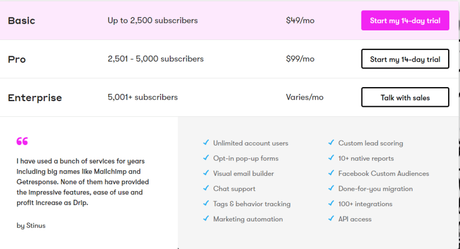
The Enterprise subscription is priced individually for each business and is intended for companies with lists of at least 5,001 people. Drip offers 24/7 email and chat support to all users, and you can start out with a 14-day free trial to test out the application.
Constant Contact is another top competitor in the email marketing and automation niche, offering everything most marketers need to run campaigns along with a variety of convenient tools and functions. It comes with a professional, sleek interface and is easy to pick up and start using within a wide range of businesses.
Like with other email automation solutions, the price of a Constant Contact plan depends on your number of email contacts. A monthly base subscription, for example, costs $20 per month for companies with up to 500 subscribers, then $45 per month for those with between 501 and 2,500.

Upgrading to Email Plus adds significantly to the cost but also gives you access to a number of features which may make the difference for some businesses. These are some of the tools included only with Plus plans:
Email Plus costs $45 per month for businesses with up to 500 subscribers, and $70 per month for those between 501 and 2,000. These prices scale quickly as you add more contacts, and other solutions may be more affordable for larger companies.
Constant Contact offers free trials of both plans for up to 60 days, giving you plenty of time to determine whether the application is right for your business. While you'll be able to use all of the program's features, you'll be limited to 100 contacts until you subscribe to a premium plan.
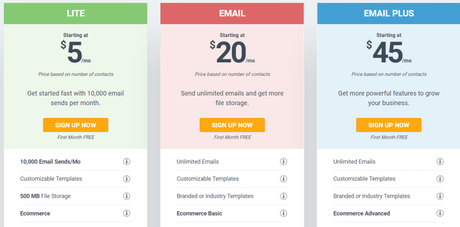
Users at both tiers have access to a range of support options, including live phone support seven days a week along with live chat and Twitter. You'll also be able to connect your account to a number of other popular solutions including Facebook, Shopify, WordPress, Outlook, Salesforce, QuickBooks, and more.
Constant Contact is an all-in-one solution that seamlessly integrates with your brand's existing processes, making it one of the top alternatives to Mailchimp and Omnisend. Consider signing up for a free trial if you're interested in seeing how the application works for your business.
ActiveCampaign is an extremely versatile solution offering different features at each of four different price points, offering something to businesses of all sizes and with a range of email marketing needs. It's also easy to scale as your company grows and you need to get more out of your email marketing platform.
The Lite subscription starts at $15 per month for businesses with 500 contacts, providing basic email automation and marketing features including support for up to three users and an unlimited number of emails.
The Plus plan comes at a significantly higher rate (starting at $70 per month) and adds a range of more advanced tools such as text marketing, custom domain and branding, and customer relationship management with sales automation. It also increases the user limit to 25.
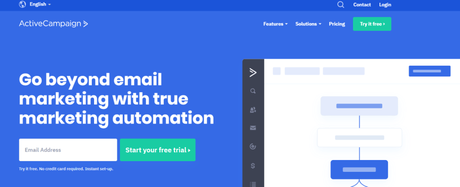
Upgrading to Professional, which starts at $159 per month, adds a few more features, including predictive sending and win probability-both backed by machine learning technology-and support for up to 50 users.
Finally, the top Enterprise tier gives businesses a number of tools to fully optimize their approach to email marketing. Starting at $279 per month, you'll have access to a dedicated account rep plus custom reporting, free design services, and more.
ActiveCampaign is powerful and cost-effective even at the lowest tier, so consider starting out there and upgrading if you find your business in need of more features. Users have access to free migration services, and ActiveCampaign will handle the transfer of data from your current email marketing provider.
Like Constant Contact, ActiveCampaign provides robust integrations with countless solutions in a number of crucial categories. Some of the most helpful connections include:
ActiveCampaign is one of the most powerful email automation tools currently available, going above and beyond the industry standard to provide convenient and flexible workflows. Its free trial works similarly to that of Constant Contact, including all of the features available in the Profession tier, but limiting users to 100 contacts (plus 100 sent emails).
SendinBlue is another popular email marketing program offering scalable plans based not on the size of your email list but on the total number of messages. Its free subscription is one of the most powerful free plans offered by any email automation solution, and users can upgrade at any time if they find themselves needing more than the 300 emails allowed daily.
Users can access the Lite plan for $25 per month, increasing the email limit from 300 per day to 40,000 per month. The $39 per month Essential subscription removes the SendinBlue logo from your messages, adds advanced statistics, and increases the maximum to 60,000 emails per month.
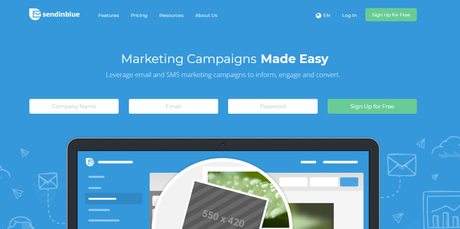
Premium Silver costs $66 per month and provides a number of additional features including access for multiple users, unlimited automation workflows, a landing page builder, and support for Facebook ads plus an email limit of 120,000 monthly messages. At $173 per month, Premium Gold further increases that number to 350,000 and gives you access to a free dedicated IP. The individually priced Enterprise plan supports unlimited users and provides a dedicated account manager and service pack.
SendinBlue offers strong tools for marketing automation, email design, and real-time reporting, making it a flexible solution that grows with you. Users have access to phone and web support, and there are numerous help, FAQ, and tutorial articles to help you use the application smoothly.
Like many other email automation tools, SendinBlue offers plugins enabling integration with countless third-party tools like WordPress, Shopify, WooCommerce, Google Analytics, Zapier, Wix, and more. The application is easy to learn and connect with any other solutions your business uses.
SendinBlue also provides features designed specifically for e-commerce users to help you seamlessly connect your marketing campaigns with your online store. The plugin for WooCommerce, for example, allows you to include actions like purchases and abandoned carts in your SendinBlue workflows.
Quick Links:
Conclusion: Omnisend Vs Mailchimp Comparison 2019 | Which One Is Better?? (With Omnisend Alternatives)
We especially recommend SendinBlue for use in small businesses with a relatively low number of sent emails, as its free plan is an incredible value. That said, it can be effective in companies of all sizes, and it's easy to upgrade your plan anytime you need access to more emails. If you're interested in SendinBlue, start with the free plan and switch to a premium subscription once you're more comfortable with the application.
MailChimp was once the unquestioned gold standard for email automation, but there are now a large number of competitors offering their own unique features. While Omnisend is the most popular alternative to Mailchimp and a great option for most businesses, you can't go wrong with any of the programs mentioned in this article.


